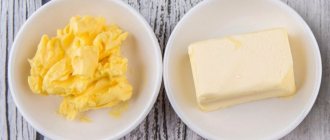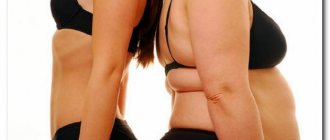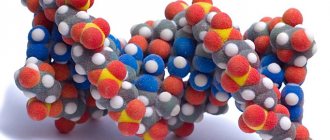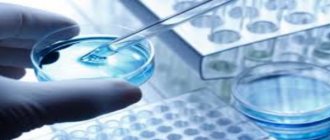Fatty liver (liver steatosis, fatty hepatosis) is a disappointing diagnosis that affects about 25% of the population of developed countries. With timely detection and treatment, the pathology is reversible. But the problem is that it develops asymptomatically for a long time, which makes it difficult to diagnose and leads to serious complications.
From experience, even when they see such a diagnosis in the ultrasound results, most do nothing.
Meanwhile, three to six months of using natural remedies + normalization of intestinal microflora + changes in diet and one could be happy with the result.
Fatty liver – what is it?
This is a metabolic disorder in liver cells, which results in their obesity. Fat accumulation occurs gradually, causing degeneration of gland cells. Often fatty liver
develops over many years, going through several stages.
- — The initial stage is minor accumulations of fat in individual cells.
- — Stage I – formation of larger fat deposits.
- — Stage II – most of the gland cells become obese.
- — Stage III – diffuse fatty liver, accompanied by the formation of multiple fatty cysts.
As a rule, fatty infiltration develops without any inflammatory phenomena, which explains its latent course and the absence of disturbing symptoms. But significant damage to the parenchyma leads to liver failure. And if an inflammatory process is added to it, fibrosis or cirrhosis of the liver develops.
This is how the same diagnosis of fatty hepatosis can accompany you all your life at a calm pace or in a few years lead to the tragic degeneration of liver cells into cirrhosis. It is worth remembering that every fourth person has it! There are reasons to start thinking!
Liver and excess weight. How excess weight affects the liver
Obesity never starts suddenly. It always develops gradually, without causing much concern at first. Many people believe that weight gain is generally characteristic of age and do not see any particular problem in the fact that they have to update their wardrobe every two to three years. Meanwhile, the accumulation of fat in the body is not only an aesthetic problem. A particular danger is that the fatty “layer” appears not only under the skin, but also on many internal organs.
It begins to cover the heart, blood vessels, lungs, liver... In overweight people, fat and carbohydrate metabolism is disrupted, all organs work under overload, as a result - a predisposition to diabetes, hypertension, arthritis and other diseases, including fatty liver.
HOW DOES THIS HAPPEN?
As you know, all the food we eat consists of proteins, carbohydrates and fats. The main task of carbohydrates is to provide the body with energy. Both during heavy physical activity and during life. Carbohydrates have a special ability to quickly release energy when broken down. At the same time, they can accumulate in the body “for a rainy day”, if necessary, easily leaving the storage cells.
Carbohydrates themselves of any origin are considered by our body as a kind of “universal fuel”: when they all enter the small intestine, they form glucose, which then enters the blood and liver. The liver acts as a “depot” where glucose is stored in the form of glycogen and, if necessary, returned to the blood.
The scheme is debugged to the smallest detail. With the exception of one circumstance: like any warehouse, the liver has limitations on storage volume. The average adult liver can store about 90 grams of glycogen. Everything that is formed in excess of this amount (as a rule, people who do not follow a diet and lead an inactive lifestyle have several times more excess) turns into fat. Fat is also sent to reserve - but not to the liver, but to any other suitable places.
Due to excess glucose, the liver ceases to perform its function and becomes a real factory of fat reserves. Instead of simply maintaining a normal level of glucose in the blood, liver cells - hepatocytes - very soon find themselves filled primarily with fat, and the reserves of unclaimed glycogen are reduced to a minimum.
The result is the so-called steatosis, or fatty liver . The most dangerous thing about this disease (besides the general dysfunction of the liver) is that any amount of carbohydrates coming from food causes an increase in blood glucose levels. This happens because there is simply no room for glucose in hepatocytes - all the free space is occupied by fat. And such jumps in glucose levels are nothing more than the onset of type 2 diabetes mellitus...
Interestingly, the pancreas in such people works completely normally, and increased blood glucose levels automatically cause increased insulin production. It is obvious that treatment of this condition should primarily be aimed at combating obesity. Liver steatosis is a completely reversible process; it is enough to get rid of excess weight.
But you also need to lose weight with caution. A gradual weight loss of 10 percent or more will correct the level of liver enzymes, help reduce the fat content in the liver tissue and weaken the manifestations of steatosis. While losing weight too quickly (especially through a low-calorie diet or fasting) can become a “trigger” of the inflammatory process.
HOW TO LOSE WEIGHT WITHOUT HARM TO THE LIVER?
Hepatologists unanimously say: rapid weight loss causes much more damage to the liver than gradual weight gain. The fact is that with a sharp weight loss, a process occurs that is the opposite of what we described above, talking about excess glucose. Fat begins to flow from the subcutaneous layer into the blood, and from there to the liver, where it accumulates.
Favorable conditions are created for hepatitis (and subsequent cirrhosis). In the minds of the average person, these diseases are usually associated with infections or alcoholism, but in reality, one of the causes of hepatitis may be losing weight too quickly. There is even a special term - non-alcoholic steatohepatitis. This is a pathology in which changes occur in the liver of even non-drinkers that are characteristic of alcoholics with many years of experience.
Abuse of various dietary supplements, which are supposedly powerful “fat burners,” can have an extremely adverse effect on the condition of the liver. As a rule, all these products consist of dozens of components that can cause a severe blow not so much to fat as to the liver, leading to acute or chronic liver failure.
You should not lose sight of the fact that during the breakdown of fats, a lot of toxins are formed. The more intense and faster the weight loss, the more of these toxins there are. The body does not have time to get rid of them naturally, and they manage to cause damage not only to the liver, but also to many other internal organs.
WHAT TO DO?
Don’t try to lose all those extra pounds at once. The optimal weight loss rate for liver health is 0.5–1 kg per week. Strong and rapid weight loss often causes fatty liver disease (also known as fatty liver). When you suddenly lose weight, the fats and carbohydrates in your body rush straight to the liver, forming excess deposits in it. The resulting fatty liver progresses to hepatitis and cirrhosis.
In addition, if you lose weight too quickly, the body adjusts to storing fat along the way, that is, the predisposition to obesity returns.
BMI AND LIVER
How can you tell if you are overweight or obese? “By eye” is not our method. The World Health Organization (WHO) uses a special indicator - body mass index (BMI) - to determine the degree to which a person's weight corresponds to his height. You can calculate your BMI here. A separate calculator is for athletes.
What is the connection between BMI and liver? Yes, the most direct one. The liver is the most important organ of our body responsible for metabolism. It helps process and absorb dietary fat, redistributes lipids in the body, and actively cleanses the blood of toxins and waste. The bulk of our fats are located under the skin, but about 10% accumulates in the muscles and internal organs, in particular in the liver.
Regular overeating leads to the development of negative changes in the liver - it ceases to cope with the load, and excess fat accumulates in it more and more. The organ designed to cleanse the body of toxins and process fats is no longer able to do this. As a result, fatty hepatosis develops, which causes serious problems in the body. For example, resistance to insulin, which is necessary to regulate glucose levels in the body.
Another problem is an increase in the number of particles in the blood that increase triglyceride levels.
Fatty hepatosis is not a very dangerous disease in the early stages, so patients rarely consult a doctor about it. Periodically, patients experience dull pain in the right hypochondrium, nausea, vomiting, weakness, headache, dizziness, and fatigue during physical activity. Upon examination, an enlarged, slightly painful liver is revealed. The course of the disease is usually not severe, but it can develop into more severe forms - for example, hepatitis or cirrhosis of the liver.
According to various sources, 80% of people with a BMI above 30 have fatty hepatosis. The only thing that should reassure people with excess weight problems is the reversibility of the fatty liver process. If you lose even a little body weight, the fat content in your liver will immediately decrease. Just a few days of low-calorie eating can improve insulin sensitivity.
HOW CAN I FIND MY BMI?
You can calculate your body mass index (BMI) using our special calculator.
BMI less than 18.5
You are slim and graceful. Maybe even too much.
If you have always been thin but wiry, ate regularly and well, but did not gain weight, easily tolerated all illnesses and the consequences of surgical interventions, then your thinness is healthy, and, most likely, you are a man. This type of thinness is rarely seen in adult women. Healthy thinness does not have a negative effect on health, in particular on the condition of the liver.
Even if you don't really like your figure, be glad that you are a candidate for longevity. 12% of people with this type of thinness live to an old age.
If you have weakness and poor appetite, you cannot stand cold and heat, then such thinness is unhealthy. It is probably associated with metabolic disorders, improper functioning of the digestive organs, thyroid gland or liver.
If, along with the above symptoms, you feel nausea, have abdominal pain, yellowing of the skin and whites of the eyes, dark urine, then this may indicate possible liver damage. Be sure to consult a doctor!
BMI from 18.5 to 25
What can we say? Keep it up! Your liver, like your other organs, will thank you. They will ensure the fight against diseases, the proper breakdown of fats and other nutrients, strength and beauty, and even forgive small weaknesses - for example, a New Year's feast.
The main thing is - at any time of the year, do not forget about sports and continue to eat right.
BMI from 25 to 30
This is a serious call. Maybe you still think that you are pleasant in all respects - chubby cheeks, a small tummy. But do not forget that fats are deposited not only on the stomach and sides. Fat also accumulates in the liver, which is very sensitive to various dietary deviations. By continuing to eat a lot and move little, you risk ruining not only your appearance, but also the functioning of your digestive tract. Following the fullness comes the inability of the liver to withstand the functional load.
At this stage, everything can still be corrected, but only through targeted efforts. If you let everything take its course, at one “wonderful” moment you will lose control of the situation and fall into the category of people with a body mass index above 30. This will mean obesity, which will lead to serious diseases of the internal organs and fatty hepatosis.
BMI above 30
Sadly, obesity has greatly ruined not only your appearance, but also the functioning of many internal organs. It is no longer possible to restore the full functioning of some of them, but this does not apply to the liver.
For the treatment of fatty hepatosis, drugs are prescribed that improve fat metabolism - B vitamins, folic and lipoic acids, choline chloride, progepar, ripazone, sirepar. Vitamin E also has a good effect on the liver with this diagnosis. But the most important thing is that you need to reduce your fat intake, try to eat healthy foods and move more. It is also necessary to limit other risk factors for the liver, such as alcohol and, if possible, medications.
If you do not change your lifestyle, then the diagnosis of fatty liver disease may be followed by hepatitis or even cirrhosis of the liver.
HEALTHY EATING ON A MODEST BUDGET
How to eat healthy on a modest budget? Very simple! The main thing in this matter is the plan. Follow it and everything will work out.
- Buy in bulk
Buy large packages, portion them and freeze them. This is especially useful for meat products and poultry.
Shop at discount stores. Prices for whole grain cereals, pasta, meat, fruits and vegetables are noticeably lower there.
Many food supermarkets have departments where rice, beans, and other cereals and products can be bought in bulk - they are cheaper than those packaged in bags.
If possible, purchase fruit by the box rather than by the kilogram.
Avoid pre-packaged snacks like 100-calorie packets. Buy the necessary products and divide them into portions.
- Cook for several times
On the weekend, prepare meals that you will eat all week, place the food in containers and freeze. A large pot of bean soup or chili can serve as both lunch and dinner for a day or two. This will stop you from buying expensive frozen entrees, fast food takeout, or going out to eat.
- Freezing meat products
Buy lean meats, poultry and fish on sale and then freeze.
Sometimes replace meat with other sources of protein. Beans, bean curd and eggs are an excellent and inexpensive alternative.
- Eat seasonal foods
Seasonal vegetables and fruits taste better and are much cheaper than imported out-of-season ones.
Visit local farmers or farmers' markets.
- Avoid name brand products
Products produced under the brand of a store or little-known manufacturers can be just as tasty, but will cost much less.
- Groceries and canned goods
If food spoils quickly, try buying it frozen. As for canned food, it is better to purchase it in its own juice and without the use of salt or sugar.
Buy cheaper foods such as brown rice, barley, beans or whole wheat pasta. They last a long time, and the dishes are very inexpensive. Try adding brown rice to a canned vegetarian soup or making ground lean beef with a side of canned beans or noodles.
- Plan your menu and don't go to the store on an empty stomach
Then the food will spoil less, and you will have to throw it away less often.
Research shows that people who go shopping without a list buy a lot of unnecessary things. And if you go grocery shopping hungry, the amount of the check will be many times larger.
- Avoid junk food
Ice cream, chips, muffins, and frozen ready meals are not healthy and may be the most expensive items in your diet. Spend the money you save on fresh vegetables and fruits - these are the vitamins and minerals that the body needs so much.
Follow these tips and you will not only stay within your budget, but also save on medications and stay healthy.
10 HEALTHIEST PRODUCTS
So that you understand which products should definitely be present on your table, we will tell you about the ten most useful ones. Take it with a pencil.
- Avocado
Benefits: Many people don't eat avocados due to their high fat content. But oddly enough, this particular fruit helps lower blood cholesterol and reduce the risk of developing cancer and diabetes.
Nutrients: Vitamins E, C and B6, potassium, fiber, vitamin K and folic acid salts.
Recipe: spread on bread, melt a piece of low-fat cheese on top and put a slice of tomato.
- Apples
Benefits: contain many antioxidants, as well as vitamin C, which protects blood vessels and improves iron absorption. All this reduces the risk of developing cancer and cardiovascular diseases. Especially if there are apples with peel.
Nutrients: fiber and vitamin C.
Recipe: Cut the apple into small slices and mix with green salad leaves.
- Berries
Benefits: All berries are very nutritious and are an excellent preventive measure against many diseases, including Alzheimer's disease, Parkinson's disease, diabetes and coronary heart disease. Regular consumption of blueberries improves memory and slows down the aging process. In addition, research shows that blueberries are better than other berries for preventing cancer.
Nutrients: fiber, vitamins C and K, manganese.
Recipe: Mix blueberries with yogurt or homemade cottage cheese. You can add some crushed nuts.
- Broccoli
Benefits: Broccoli is in the same family as spinach, cabbage, cauliflower, Brussels sprouts, kale and kale. Broccoli is highly nutritious and helps prevent diabetes, heart disease and some types of cancer.
Useful substances: calcium, potassium, folic acid salts, fiber, iron, magnesium, phosphorus, manganese, vitamins B, C and K.
Recipe: Lightly fry in a little olive oil, adding garlic and chicken broth.
- Salmon
Benefit: Try to eat fish at least twice a week. Salmon, herring and sardines are especially healthy. They contain heart-healthy omega-3 fats. Eating fish reduces the risk of cancer, heart disease, Alzheimer's disease, stroke, diabetes, arthritis and depression.
Nutrients: B vitamins, phosphorus, protein, selenium and omega-3 fats.
Recipe: River salmon is healthier than salmon raised in special reservoirs, as it is less likely to contain chemicals such as mercury. Pour freshly squeezed orange or lemon juice over the piece of salmon, add salt and pepper and bake until done.
- Legumes (beans, split peas, lentils)
Benefit: Legumes provide the body with energy for a long time. They are high in fiber, which reduces the risk of heart disease and normalizes blood sugar levels. All legumes, especially soybeans, are rich in protein and therefore are an integral part of a vegetarian diet.
Nutrients: fiber, proteins, vitamin B6, folic acid salts, manganese, copper, iron, magnesium, phosphorus, potassium, thiamine, calcium and zinc.
Recipe: Rinse canned beans and add them to your favorite salad.
- Mushrooms
Benefit: Mushrooms stimulate the immune system. They help prevent and treat cancer, viral diseases, normalize blood cholesterol levels and blood pressure.
Nutrients: Fiber, proteins, B vitamins, vitamins C, D, folic acid salts, iron, zinc, manganese, phosphorus, potassium, copper and selenium.
Recipe: Fry finely chopped mushrooms, onions and zucchini in a little olive oil. Adding tomato sauce makes a healthy addition to pasta dishes.
- Walnuts and almonds
Benefits: contain a lot of useful substances and have a beneficial effect on the heart. Monounsaturated fats present in almonds reduce blood cholesterol levels. Walnuts contain small amounts of omega-3 fats. Although in general nuts are a fairly fatty and high-calorie food, they can help you lose weight, since the proteins, fiber and healthy fats they contain create a feeling of fullness and help you avoid overeating.
Nutrients: magnesium, vitamin E, fiber, riboflavin, magnesium, iron, calcium.
Recipe: Grill a piece of whole grain bread, spread with cream cheese and top with crushed walnuts or flaked almonds.
- Flax-seed
Benefits: Flaxseed contains omega-3 fats, which reduce the risk of cardiovascular disease.
Nutrients: magnesium, phosphorus, copper, fiber, thiamine, manganese, potassium and zinc.
Recipe: Sprinkle flax seeds on porridge, yogurt or homemade cheese. You can also add them to dairy desserts.
- Grenades
Benefit: This product is the stuff of legends. Pomegranates have three times more antioxidants than wine or green tea. Pomegranate juice helps prevent heart disease and stroke. Drinking pomegranate juice over a long period of time slows down the aging process and prevents some forms of cancer.
Nutrients: Vitamin C and potassium.
Recipe: Sprinkle pomegranate seeds on vegetable and fruit salads. Add them to yoghurts and oatmeal.
Causes of the disease
Fatty hepatosis (steatosis, fatty liver) is one of the diseases of civilization!
There are only three main predisposing factors:
- 1. High-calorie diet with excess fats and carbohydrates with a deficiency of plant fibers, vitamins, and minerals in the diet
- 2. Overload of the body with chemistry (chronic intoxication with xenobiotics from food, water, medicines),
- 3. Damage to intestinal microflora (antibiotics and other chemicals).
Thus, metabolic disorders, exposure to toxic substances, unbalanced nutrition are the main causes of fatty liver
.
In most clinical cases, pathology develops against the background of the following diseases and bad habits.
- - Obesity.
- — Violation of fat metabolism.
- - Diabetes.
- — Chronic diseases of the gastrointestinal tract, accompanied by impaired absorption of nutrients.
- — Lack of thyroid hormones.
- - Hypercortisolism syndrome - excess adrenal hormones.
- — Abuse of alcoholic beverages.
- - Uncontrolled use of medications.
- - Systematic fasting or, conversely, overeating.
- — Lack of protein in the diet.
If the pathology develops as a result of alcohol abuse, then it is usually called alcoholic fatty liver disease. Non-alcoholic steatosis develops under the influence of other internal and external factors not related to the consumption of alcoholic beverages. In this case, those at risk are people over 45 years of age, those who are obese, prone to metabolic disorders, and women who practice various new-fangled diets and fasting methods.
It is important to know! Before understanding how to deal
with
emerging
fatty liver
, it is necessary to determine the cause of its development. It must be eliminated! Otherwise, even the most effective and expensive treatment will not bring a positive result.
Symptoms
As a rule, at the initial stage of the disease, signs of fatty liver
weakly expressed. This may include discomfort in the right hypochondrium, weakness, and causeless nausea. Patients attribute their malaise to fatigue, overwork and do not rush to see a doctor. Therefore, in most clinical cases, pathology is discovered by chance - during an examination of the body and an ultrasound scan.
Severe symptoms of fatty liver
appear when the functions of the gland are impaired. In this case, the patient exhibits the following signs of pathology.
- - Feeling of fullness and pain in the right hypochondrium, which intensifies during physical activity and after eating.
- - Nausea, intestinal dysfunction.
- - Yellowness of the sclera and skin.
- - Itchy skin or rash.
- - Loss of appetite.
- - Sudden weight fluctuations.
- — Signs of intoxication of the body.
It is important to know! Knowing why
Most often
there is fatty liver
, you need to carefully monitor your health. First of all, the warning applies to patients suffering from obesity, diabetes and alcohol dependence. Regular liver examinations are also recommended for women who are keen on diets, people over 45 years of age and anyone who likes fatty foods.
Establishing diagnosis
Signs of fatty liver may not appear for a long time. Often the disease is detected accidentally as a result of a general medical examination. To determine an accurate diagnosis, the following methods are used:
- Biopsy. A small amount of liver cells are collected from an adult. After studying them, it is possible to accurately determine the condition of the organ. The selection of material is carried out by laparoscopy or puncture using a special needle.
- Ultrasound diagnostics. During the examination, it is possible to assess the size and condition of the liver.
- Magnetic resonance imaging. This technique is considered completely safe. It allows you to study the structure of the liver in detail and identify all pathologies. Using specialized equipment, it is possible to obtain images in all projections. Such examination is not used in all cases due to its high cost.
- Laboratory blood test. Helps determine cholesterol levels, as well as ESR, which may indicate the presence of an inflammatory process.
The choice of technique will be determined by the clinical picture of the disease and the characteristics of the human body. In addition, the doctor must analyze all existing symptoms, the patient’s medical history and his living conditions. Only after this is a conclusion made about the presence of the disease and its severity.
Diagnostics
Fatty liver
easily diagnosed using ultrasound. During its implementation, increased echogenicity of the gland is revealed, which indicates the accumulation of fat in the cells of the organ.
To confirm the initial diagnosis, a biochemical blood test, MRI and computed tomography are prescribed. To make a final diagnosis and exclude the malignant nature of the pathology, a biopsy is performed.
Much attention is paid to collecting anamnesis. Studying lifestyle, eating habits and previous diseases helps to establish the cause of the pathology and understand how
It is better
to get rid of fatty liver
.
Treatment
Treatment of fatty liver
- what a doctor does. In the Sokolinsky System we do not use this expression in accordance with the law.
And from the point of view of common sense, fatty hepatosis (steatosis) is a condition where, first of all, we influence the causes and metabolic processes. Therefore, natural remedies are not medicines. It is necessary to somewhat reconsider your lifestyle and diet, supplement it with useful substances and remove the unhealthy ones.
Universal tablets for fatty liver
are not yet known to science. Therefore, in any case, treatment is carried out comprehensively and in several directions at once.
As for natural ways to get rid of fatty liver, these are:
- - Dieting - avoiding fatty foods, especially heated animal fats, reducing red meat in the diet in favor of fish and poultry. Read more about the dos and don'ts of fatty liver disease.
- — Hepatocyte support – taking natural hepatoprotective agents for at least 2 months in a row.
- — Improving fat metabolism - taking essential phospholipids (lecithin) for 2-3 months in a row.
- — Improving the patient’s overall well-being – strengthening and cleansing the body of toxic substances.
- - Maintaining physical activity - increasing the range of movements is necessary to signal the body to spend more energy from fats in muscle work, and not store it excessively.
It is important to know! In general, the prognosis for the non-alcoholic form of the disease is favorable - liver changes are reversible. However, the patient must understand that after
managed
to eliminate fatty liver
, he should continue to adhere to the doctor’s recommendations and, above all, not rush to lean back on high-calorie foods.
Diet food
When the first symptoms occur, treatment for fatty liver is required immediately. Particular attention will need to be paid to proper nutrition. It is the wrong diet that often provokes illness, so choosing the right menu for a long time means exhaustion.
You should eat:
- cereals;
- honey;
- fruits, vegetables, berries (non-acidic);
- low-fat varieties of fish (tuna, pike perch, pike), meat (rabbit, turkey);
- butter, sour cream, eggs.
Basic rules should be followed:
- alternate cereals and protein foods;
- It is recommended to consume 1200 kcal per day for women and 1500 kcal for men;
- It’s better to eat little by little, without overeating.
Also, the organ cannot normally synthesize bile, which is necessary for the processing of bile.
Several recipes for delicious dishes that are useful for hepatosis
Fatty liver requires a constant diet, but this does not mean a complete refusal of tasty dishes. The simplest and at the same time useful recipes if you need to treat fatty liver:
- for breakfast you can bake chicken fillet in the oven, doused with beaten egg whites and milk;
- For dessert, a baked apple is suitable. It needs to be baked in the oven until softened. First you need to take out the core and pour a little honey there, add cinnamon to taste;
- Rabbit meat is marinated in vegetable oil with spices for 2 hours, then stewed in a pan and served with vegetable salad;
- The chicken carcass is rubbed with salt and vegetable oil, stuffed with pre-boiled buckwheat and baked in the oven for 1.5 hours.
It is better to drink unsweetened tea with food. These dishes are easy to prepare and will help you get into shape. This is also a great solution to combat fatty liver disease. The main thing is to eat even such healthy food in small portions.
Diet
Nutrition for fatty liver
should include foods rich in vitamins, amino acids and vegetable protein.
Fatty and carbohydrate foods should be excluded from the diet. The menu should contain dishes based on the following food products.
- - Vegetables.
- — Fruits (preferably low in sugar).
- - Whole grain porridge.
- - Dairy products.
- — Plant fibers.
- — Bird and fish
It is important to know! Drinking alcoholic beverages in significant doses is contraindicated for any form of fatty liver disease! But the biggest evil will be all types of sweet and fizzy drinks (liqueurs, liqueurs, wines other than dry, champagne), distillates (whisky, plum brandy, tequila, etc.).
For doses of strong drinks, even rare use, more than 50 ml, for wine - more than 200 ml, for beer (high-quality, filtered) - more than 0.5 liters. Of course, no one has proven that you can’t drink a glass of wine or cognac once a month. But, making an exception for yourself, always ask yourself the question - what was done this month to detox and support the liver.
Restore the liver after alcohol
Authorized Products
The diet for fatty liver should include:
- Well-baked dried/day-old white bread/crackers (if tolerated, black bread can also be used) without burnt crusts.
- Vegetable/weak meat broths and soups based on them with the addition of well-cooked cereals and vegetables. When preparing meat/fish broths, during the cooking process, drain the first broth and cook the meat/fish in a new portion of water until cooked.
- Dietary varieties of red meat (lean veal/beef), rabbit, chicken, turkey. Meat must be thoroughly cleaned of fat/tendons, and poultry from skin. Boiled meat can be further cooked.
- Low-fat fish (bream, pollock, pike perch, perch, hake, cod) in pieces or chopped, boiled, baked.
- Porridge, noodles and small pasta cooked in water. Allowed to be consumed in the form of casseroles with cottage cheese.
- Vegetables (cucumbers, cabbage - white, cauliflower, zucchini, beets, potatoes, carrots, pumpkin) raw and baked. You can add some garden herbs to salads.
- Low-fat fermented milk products, the consumption of which should be reduced or stopped when dyspeptic disorders occur.
- Sweet ripe berries/fruits: peaches, pears, apples, apricots, overripe bananas, strawberries, currants, kiwi, prunes, figs, persimmons, cherries, quinces, plums, pomegranates, watermelons, dates, dried apricots, raisins, blueberries. Grapes, as well as juices, compotes, jelly and jelly from them.
- In moderation: caramel, marmalade, jam, marshmallows, preserves, toffee.
- Refined/unrefined vegetable oil (corn, olive).
- Liquid up to 2 l. It is recommended to drink freshly prepared/diluted juices, herbal teas, rosehip infusion, and still mineral water.
Table of permitted products
| Proteins, g | Fats, g | Carbohydrates, g | Calories, kcal | |
Vegetables and greens | ||||
| eggplant | 1,2 | 0,1 | 4,5 | 24 |
| zucchini | 0,6 | 0,3 | 4,6 | 24 |
| cabbage | 1,8 | 0,1 | 4,7 | 27 |
| broccoli | 3,0 | 0,4 | 5,2 | 28 |
| carrot | 1,3 | 0,1 | 6,9 | 32 |
| cucumbers | 0,8 | 0,1 | 2,8 | 15 |
| salad pepper | 1,3 | 0,0 | 5,3 | 27 |
| parsley | 3,7 | 0,4 | 7,6 | 47 |
| iceberg lettuce | 0,9 | 0,1 | 1,8 | 14 |
| tomatoes | 0,6 | 0,2 | 4,2 | 20 |
| pumpkin | 1,3 | 0,3 | 7,7 | 28 |
| dill | 2,5 | 0,5 | 6,3 | 38 |
Fruits | ||||
| bananas | 1,5 | 0,2 | 21,8 | 95 |
| apples | 0,4 | 0,4 | 9,8 | 47 |
Nuts and dried fruits | ||||
| raisin | 2,9 | 0,6 | 66,0 | 264 |
| dried figs | 3,1 | 0,8 | 57,9 | 257 |
| dried apricots | 5,2 | 0,3 | 51,0 | 215 |
| dried apricots | 5,0 | 0,4 | 50,6 | 213 |
| prunes | 2,3 | 0,7 | 57,5 | 231 |
Cereals and porridges | ||||
| buckwheat (kernel) | 12,6 | 3,3 | 62,1 | 313 |
| oat groats | 12,3 | 6,1 | 59,5 | 342 |
| pearl barley | 9,3 | 1,1 | 73,7 | 320 |
| rice | 6,7 | 0,7 | 78,9 | 344 |
Flour and pasta | ||||
| pasta | 10,4 | 1,1 | 69,7 | 337 |
| noodles | 12,0 | 3,7 | 60,1 | 322 |
| buckwheat noodles | 14,7 | 0,9 | 70,5 | 348 |
Bakery products | ||||
| bran bread | 7,5 | 1,3 | 45,2 | 227 |
| whole grain bread | 10,1 | 2,3 | 57,1 | 295 |
Confectionery | ||||
| jam | 0,3 | 0,2 | 63,0 | 263 |
| jelly | 2,7 | 0,0 | 17,9 | 79 |
| marshmallows | 0,8 | 0,0 | 78,5 | 304 |
| milk candies | 2,7 | 4,3 | 82,3 | 364 |
| fondant candies | 2,2 | 4,6 | 83,6 | 369 |
| fruit and berry marmalade | 0,4 | 0,0 | 76,6 | 293 |
Raw materials and seasonings | ||||
| honey | 0,8 | 0,0 | 81,5 | 329 |
| sugar | 0,0 | 0,0 | 99,7 | 398 |
Dairy | ||||
| kefir 1.5% | 3,3 | 1,5 | 3,6 | 41 |
| Ryazhenka | 2,8 | 4,0 | 4,2 | 67 |
Cheeses and cottage cheese | ||||
| cottage cheese 1% | 16,3 | 1,0 | 1,3 | 79 |
Meat products | ||||
| beef | 18,9 | 19,4 | 0,0 | 187 |
| rabbit | 21,0 | 8,0 | 0,0 | 156 |
Bird | ||||
| boiled chicken breast | 29,8 | 1,8 | 0,5 | 137 |
| boiled chicken drumstick | 27,0 | 5,6 | 0,0 | 158 |
| boiled turkey fillet | 25,0 | 1,0 | — | 130 |
Eggs | ||||
| soft-boiled chicken eggs | 12,8 | 11,6 | 0,8 | 159 |
Fish and seafood | ||||
| flounder | 16,5 | 1,8 | 0,0 | 83 |
| pollock | 15,9 | 0,9 | 0,0 | 72 |
| cod | 17,7 | 0,7 | — | 78 |
| hake | 16,6 | 2,2 | 0,0 | 86 |
Oils and fats | ||||
| butter | 0,5 | 82,5 | 0,8 | 748 |
| olive oil | 0,0 | 99,8 | 0,0 | 898 |
| sunflower oil | 0,0 | 99,9 | 0,0 | 899 |
Non-alcoholic drinks | ||||
| water | 0,0 | 0,0 | 0,0 | — |
| mineral water | 0,0 | 0,0 | 0,0 | — |
Juices and compotes | ||||
| apricot juice | 0,9 | 0,1 | 9,0 | 38 |
| carrot juice | 1,1 | 0,1 | 6,4 | 28 |
| peach juice | 0,9 | 0,1 | 9,5 | 40 |
| plum juice | 0,8 | 0,0 | 9,6 | 39 |
| tomato juice | 1,1 | 0,2 | 3,8 | 21 |
| pumpkin juice | 0,0 | 0,0 | 9,0 | 38 |
| rose hip juice | 0,1 | 0,0 | 17,6 | 70 |
| * data is per 100 g of product | ||||
Possible complications
Without treatment and diet, liver failure, chronic hepatitis and cirrhosis may develop. With alcoholic fatty disease, the risk of complications is higher than with non-alcoholic obesity.
It is important to know! Fatty hepatosis, which occurs against the background of visceral obesity of the abdominal cavity, increases the risk of developing cardiovascular diseases and arterial hypertension. And the recent conclusion of scientists completely shocked the world community - patients with deposits of internal fat in the abdominal area have a smaller lung volume and are at risk of gradual narrowing of the airways. According to the observations of specialists, they also have a smaller brain volume, while they are more at risk of developing dementia and Alzheimer's disease. Therefore, patients suffering from intra-abdominal obesity are recommended not only to undergo regular liver examinations, but also to undergo adequate treatment of the pathology.
Prevention
Knowing
fatty liver disease
is and what
medications
to treat
it makes it easier to avoid it. First of all, you need to give up excessively fatty foods, maintain an active lifestyle and control your weight. Next, you need to reduce your alcohol consumption and pay attention to cleansing the body of toxins - use natural detox complexes. You need to monitor the condition of your body and undergo regular medical examinations.
Liver tests











